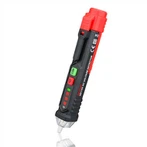What is the difference between combustible gas detectors and toxic gas detectors?
Combustible gas detector is a detector that responds to the concentration of a single or multiple combustible gases. There are two types of combustible gas detectors: catalytic and infrared optical. When combustible gas enters the detector, it causes an oxidation reaction (flameless combustion) on the surface of the platinum wire. The heat generated increases the temperature of the platinum wire, and the resistivity of the platinum wire changes.
Toxic gas detectors can be used to detect the concentration of relevant toxic gases in the petroleum, chemical, and pharmaceutical fields in real-time, to ensure the safety of workers! The toxic gas detector is a non-interference "intelligent" detector produced, which can detect the types of toxic gases and the breadth of detection range, which is second to none in the industry.
Combustible gas detectors and toxic gas detectors are commonly used equipment in industrial settings, and many people are not aware of the difference between the two. The following article will explain to everyone:
1. Detect gas
The combustible gas detector mainly detects combustible gases and uses methane as the standard to detect the concentration of combustible gases. According to the different combustible gases in the user's workplace, the gas concentration can be set based on the main gas as the standard detection gas.
A toxic gas detector needs to know which specific gas or gases to detect. You can choose a separate toxic gas detection alarm or a composite toxic gas detector, depending on whether the toxic gas in the workplace needs to be detected for a single gas or for multiple gases.
2. Gas sensor
The combustible gas detector uses a catalytic combustion type gas sensor, while the toxic gas detector uses electrochemical sensors, infrared sensors, or PID sensors. The unit concentration content of the detected gas varies, and a series of formulas are required for conversion.






